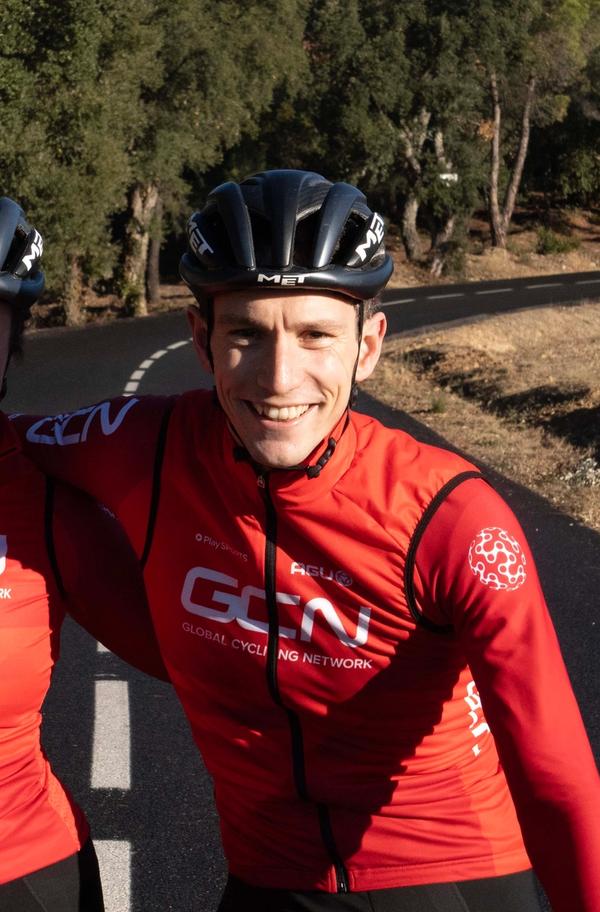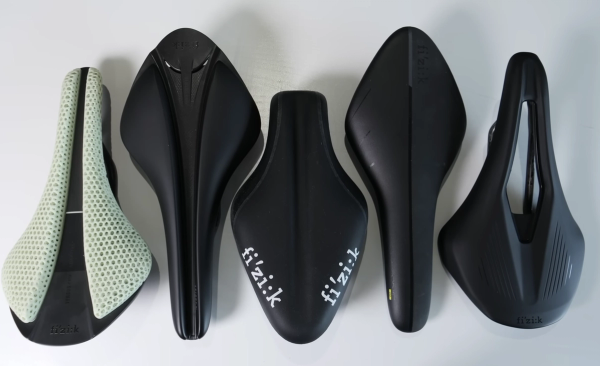How to avoid getting a numb penis while cycling
We caught up with industry experts to learn what causes numbness and how to prevent it from occurring
Tom Hallam-Gravells
Online Production Editor
Many men suffer with a numb penis while cycling. It can be an unnerving experience, especially if it becomes a recurring problem, at which point the looming prospect of long-term damage may enter your mind.
Like many bike-related physical ailments, numbness isn’t something that should simply be accepted as a part of cycling and can usually be easily rectified by a few simple changes.
To learn more about why numbness happens and what can be done to cure the issue, we caught up with urologist Anthony Koupparis and saddle expert Phil Burt.
- Read more: Is cycling bad for men's sexual health?
What causes numbness while cycling?
Before we delve into the solution to any penile numbness, it’s important to understand why it is happening in the first place, which requires a dive into anatomy.
“There is a nerve called the pudendal nerve, which has got some more branches that come off it, which supplies the sensation to that part of the body, including your penis,” Koupparis explained.
“If you sit on it for long periods and compress the nerves, and interrupt a little bit of the blood supply, it can cause problems with the way the nerve works and that causes numbness.”

© GCN
Numbness occurs when there is pressure on the pudendal nerve
Riding a bike naturally places extra pressure on this area of our body, which is planted in the saddle, but not everyone suffers with numbness. Beyond a bike’s set-up and the saddle, which we’ll touch on later, this can partly be explained by the individuality of a person’s anatomy, which can vary slightly from person to person.
“There is a relatively fixed course for the pudendal nerve, the way that it travels from your spine all the way down to where it needs to go,” Koupparis continued.
“But there will be variations. The amount of fat that surrounds it, the amount of fascia, exactly what the relation is between the nerve and the bony structures around there.
“And then if you add the size of the human being or the cyclist, how they’re sitting, what they’re sitting on, what their shorts are like, you can get a little bit of everything coming together to make one person suffer more than another.”
Should you be concerned about numbness?
That’s the anatomy lesson over, but it will do little to hold off lingering fears of long-term damage. Everyone can breathe a sigh of relief here as Koupparis dispels any myths that penis numbness is a sign of serious damage, although there is a caveat to that.
“It’s a bit like waking up and you can’t feel your arm,” he explained with an analogy on something everyone has experienced. “If you get out of bed and shake it off, then your arm works perfectly.”
It’s some much welcome reassurance. Now for the caveat, though, which is where many people can run into problems, usually by ignoring the issue of numbness rather than addressing it.
“It’s cause for taking notice. I think if you’ve just started cycling and then suddenly you notice that your perineum and your penis is completely numb, something needs a little bit of attention. Sort your bike fit out, have a look at your saddle, look at your cycling shorts.
“If you did it for really long periods, your undercarriage is numb while you’re cycling, then it’s numb for several hours afterwards and you just keep on doing it, then conceivably you could cause long-term damage. Hopefully people will look after that part of their body.”
Check the position of your saddle
Numbness isn’t something that you have to be overly worried about but it shouldn’t be ignored either, at which point most cyclists immediately point an accusing finger at their saddle and swiftly head to the internet to order a new one. While a saddle can be the offending culprit, and certainly seems like the obvious cause, it’s often the position of the saddle that needs changing.
Saddle position means many different things and it’s important to work through the process of changing it methodically according to Phil Burt who, having worked with pro teams including Ineos Grenadiers, knows a thing or two about keeping a cyclist happy in the saddle.
“I think it’s important to have a plan, a systematic approach to eliminating the reasons why you’re getting numbness,” Burt said. “The most important thing is to not disappear down the changing your saddle rabbit hole, constantly.”

© GCN
Saddle tilt can be a cause of numbness
This checklist of potential causes includes three key factors.
“Saddle height, saddle set back and saddle tilt are the three things to check. A really common reason would be nose up. So your saddle is effectively nose up, so you’re rotating into the nose of the saddle. That could be the perfect saddle for you but, because the nose is up, it’s increasing that pressure on the pudendal nerve of the penis and simply by dropping the nose of the saddle by one or two degrees, you can completely alleviate it.”
Generally, a saddle should be positioned at a flat angle, although angling it slightly forward will also alleviate more of the pressure. The temptation here is to tilt the saddle aggressively forward which would solve many of your numbness problems, but would only move them to other areas of your body. In such a tilted forward position, the hips can’t provide the necessary support which usually passes onto the arms, placing extra stress on the hands, shoulders and neck.
- Read more: Saddle angle - have we got it all wrong?
Is your bike set up too aggressively?
The other obvious cause of numbness, before attention turns to the saddle, is a rider’s position, especially in the aerodynamic era where the trend is sharply arching towards the aggressive end of the scale.
An aggressive set-up - achieved through a longer reach and lower drop - is usually associated with other problems, like neck and back pain, but it could also be causing the numbness you may be experiencing.
“With excessive reach or drop, or both together, what you’ll tend to do to try and get there is rotate your pelvis further forward, flatten off your back, and the excess of that will put more pressure further forward on your pubic rami and that could increase the pressure on your pudendal nerve and give you numbness,” Burt said.
The obvious solution here is to test a less aggressive position on the bike, with a shorter reach and higher stack height. It’s something that could alleviate other problems you may be experiencing too, as many amateur cyclists are guilty of adopting something overly aggressive like the pros.
Even small adjustments can make a big difference and it doesn’t necessarily need to be a complete overall of your riding position. Make incremental adjustments and see if the numbness disappears.
- Read more: How to find the perfect bike fit
The end of aero gains?
All of the advice appears to point towards a less performance-orientated position on the bike, which isn’t exactly in keeping with the aero driven world that many cyclists ascribe to.
For some cyclists, performance really matters, so switching to something less aerodynamic isn’t an option and a different approach is required.
“If you’ve then gone, ‘I want to ride this position’, you’re absolutely right, this is the most aerodynamic position. It’s then changing the saddle to one that allows you to do that,” Burt explained, as saddle choice cropped up.
It may seem strange that the specific saddle appears so low down in the list of potential causes for numbness, especially as it’s often immediately labelled as the culprit. But, as Burt has already pointed out, that can lead to a never-ending cycle of swapping saddles and ignoring the real problem.

© GCN
A cut out in a saddle can relive some of the pressure
Replacing a saddle is only a step that should be taken after exploring the other possible avenues or if compromising your aggressive position on the bike isn’t an option. If the saddle does fall into your crosshairs, particular focus needs to be placed on finding an alternative that addresses the numbness problem. The most obvious feature to help with this is a cut out, which will provide a pressure-free channel for your soft tissue to sit in.
Of course, it isn’t quite that simple and a cut out won’t guarantee an end to numbness, with individual anatomy often playing a part. Bigger isn’t always better, either, and a larger cut out can increase pressure to other parts of your body, increasing the risk of saddle sores.
Short-nosed saddles can be a good option as they restrict movement, while soft-nosed saddles are good for reducing pressure. Ultimately, the best saddle will vary by person, so the best solution is to shun the online route and head down to your local bike shop to test them in person.
What type of saddle do you use? Have you ever experienced numbness, and could you fix it? Let us know in the comments.






.jpg?w=600&auto=format)



